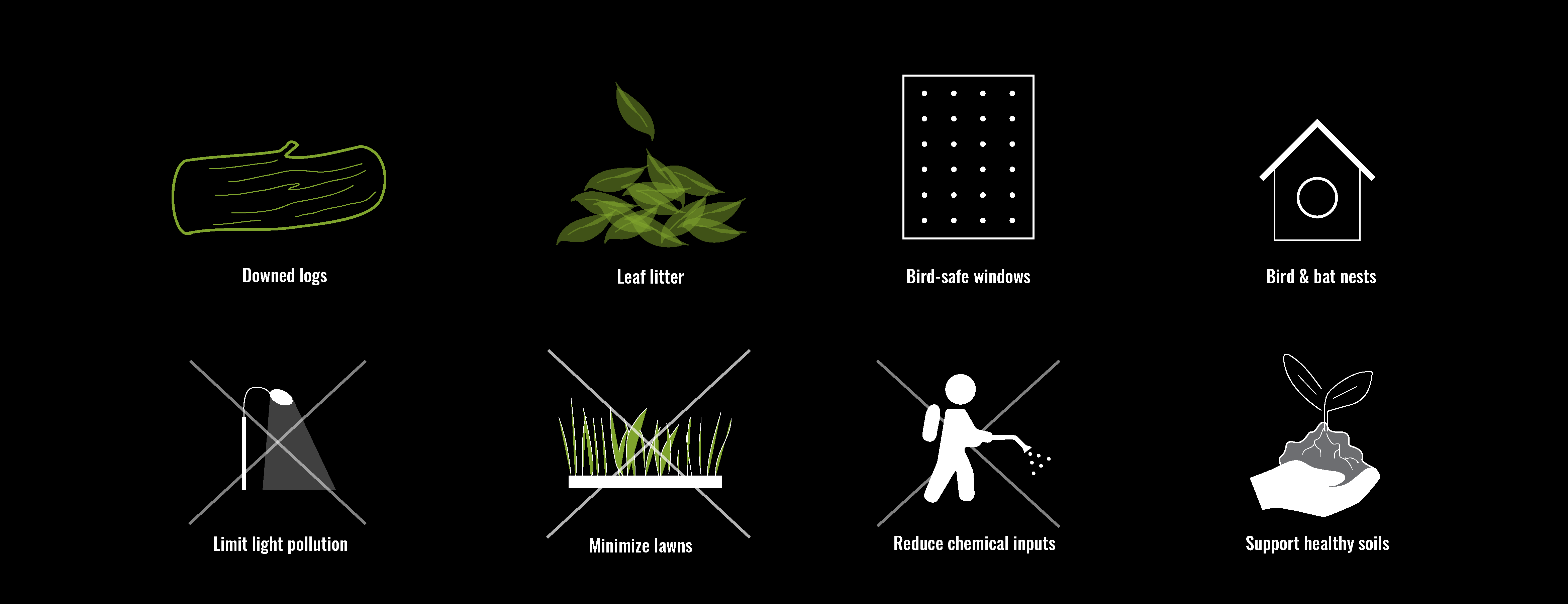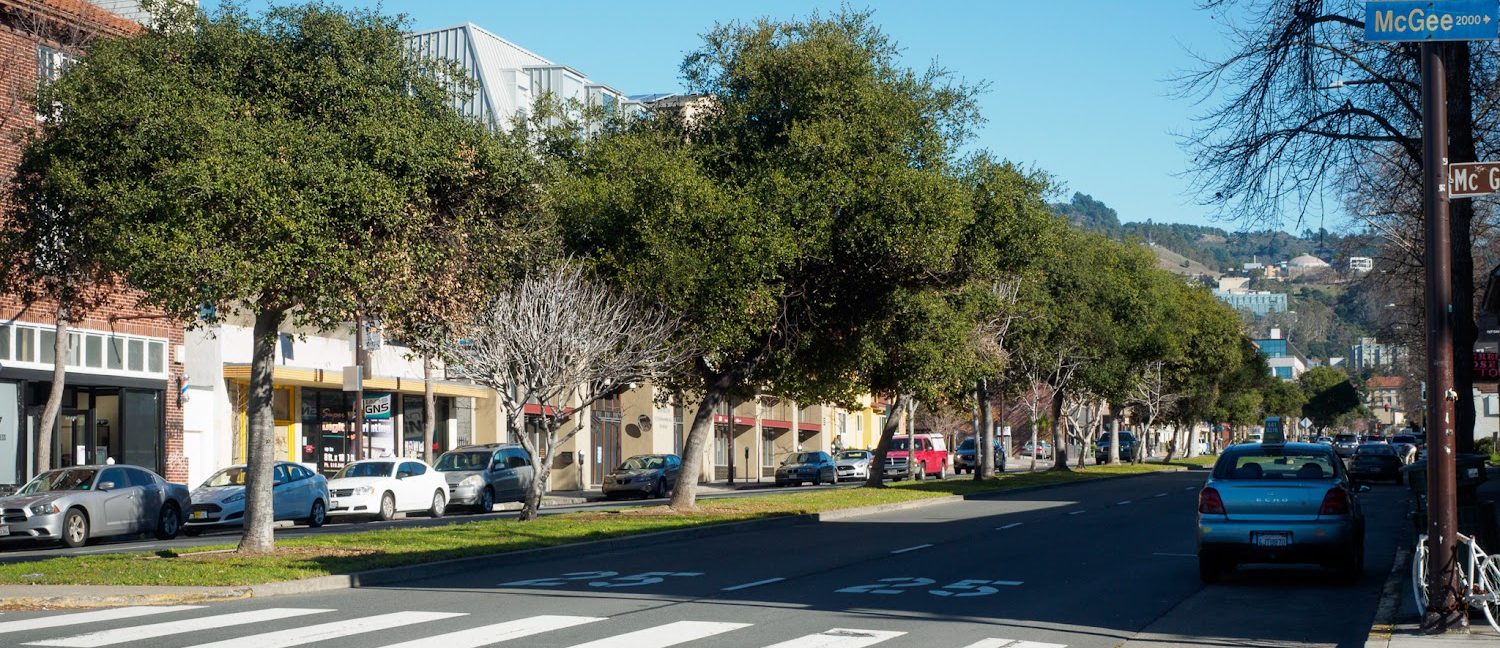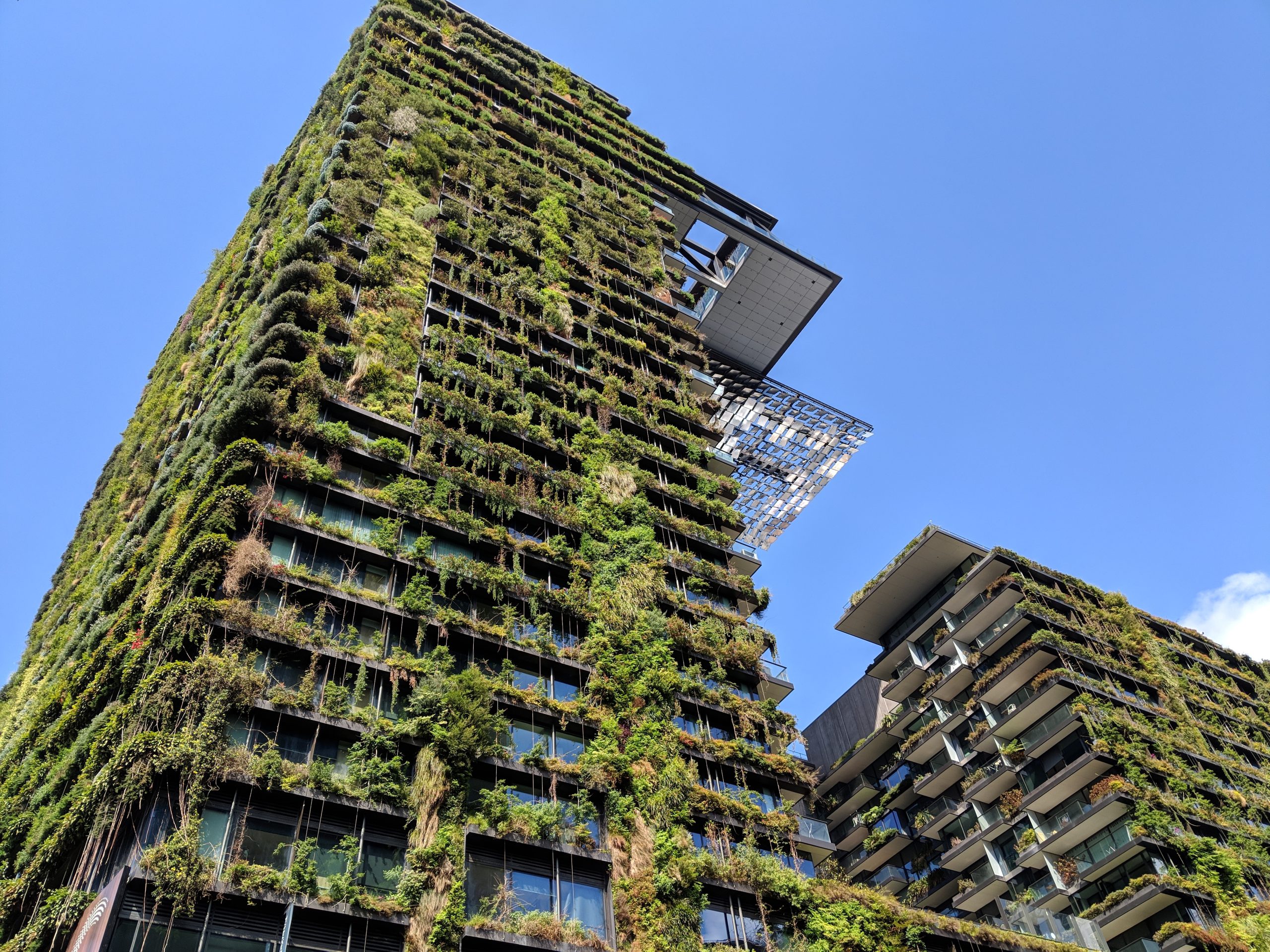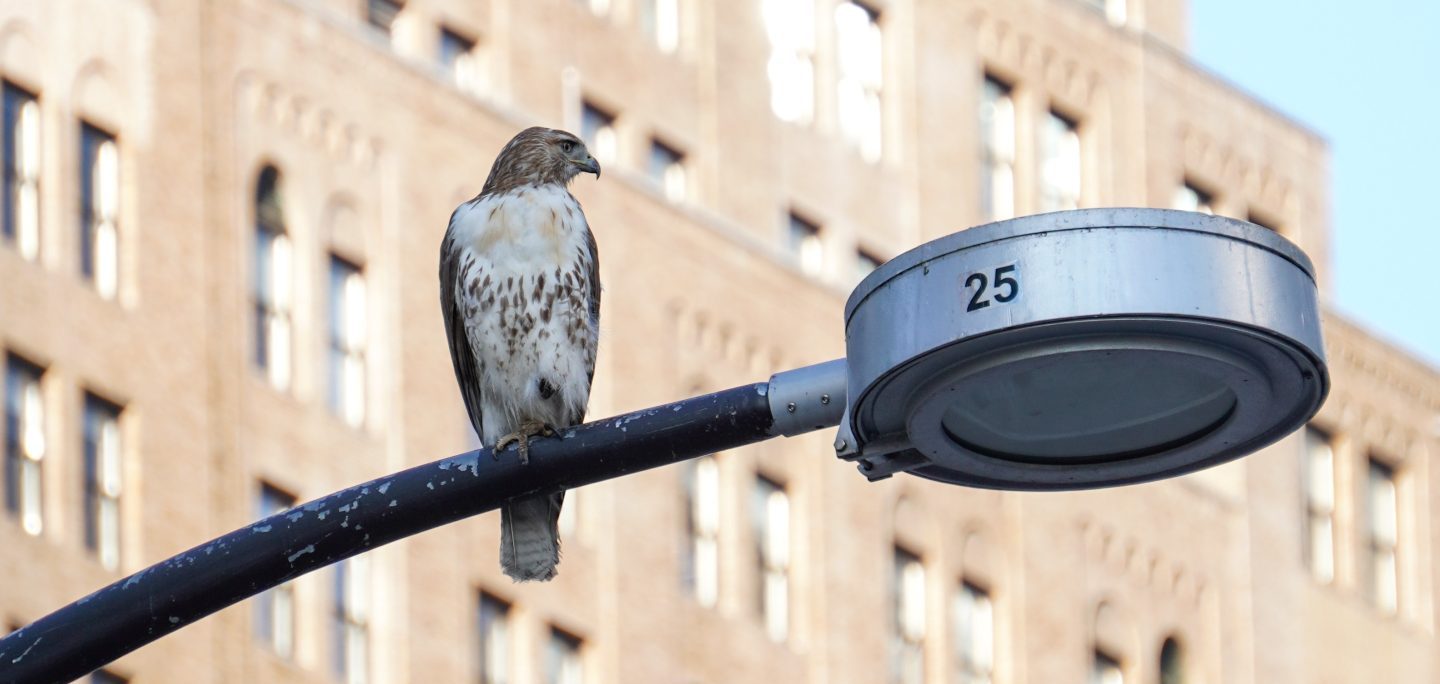Management
Image credits: SF Planning Department
Management includes interventions or practices adopted by land or facility managers that create changes in the landscape.
Land or facility managers can often adopt changes that are both beneficial to biodiversity and lower in cost. Biodiversity-friendly management actions include reducing pesticide and herbicide use, minimizing disturbance to sensitive wildlife areas, limiting the impacts of domestic cats and dogs, reducing light and noise pollution, and regulating human activity to reduce conflict with wildlife. Design actions such as fitting buildings with bird-safe windows and creating wildlife underpasses and overpasses are also essential to creating a more wildlife-friendly built environment.

Relevant Planning and Design Strategies
The Urban Biodiversity Framework identifies seven key landscape elements that, when integrated together into urban design and planning, have the greatest chance of supporting the greatest number of species. Each element is related to various strategies from the urban planning, site design, and detailed design chapters.
- All Strategies
- Urban Planning
- Site Design
- Detailed Design






